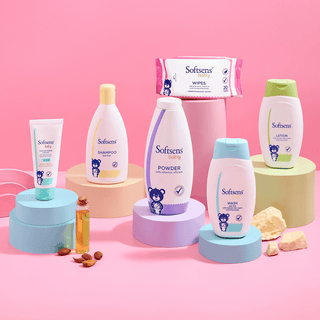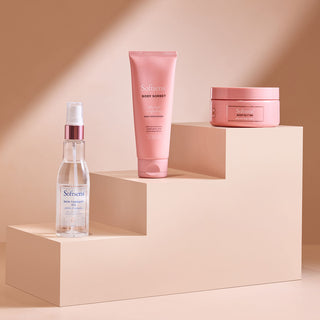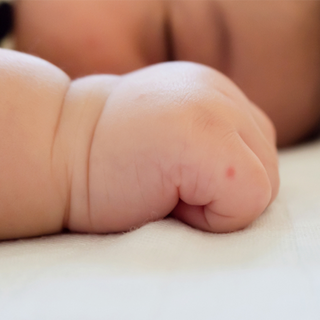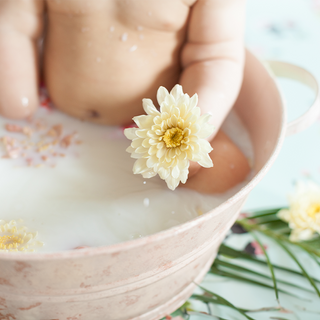
Whether your baby is being formula-fed or you’re supplementing breast milk with formula, here are some essential bottle-feeding tips that’ll help make bottle feeding easy and smooth.
1. Pay attention to hygiene and safety
Always sanitize the feeding bottles properly before and after use. Wash your hands well before handling the milk and feeding your little one. If preparing formula, make sure the water you are using is absolutely safe. If you’re expressing milk, clean your pump parts properly before and after use.
2. Pick the right bottle
It’s easier to figure out what kind of bottle you will need when you start understanding your baby’s feeding requirements. A bottle with an upward tilt and proper venting can help prevent air bubbles. Choose one with a wide nipple base for babies who are transitioning from the breast to the bottle. Baby bottles with a wider mouth are easier to clean. Keep an eye on the nipples and replace whenever necessary. The size of the feeding bottle should also change as your baby grows.
3. Hold baby in a semi-upright position while feeding
The way you position your baby during feeding is important. Hold your little one in the crook of your arm at a 45-degree angle, in an almost-upright position. Placing your baby in a lying-down position while feeding can increase the risk of ear infections as the milk can flow into the ear.
4. Make sure you hold the feeding bottle correctly
At first, hold the bottle in a position that’s parallel to the ground so your baby can drink slowly. As the bottle empties, tilt it upwards. Always make sure that the head of the nipple is full of milk so that your baby doesn’t gulp air that can likely cause gas.
5. When starting any kind of formula, keep an eye out for allergies
Most of the newborn formulas available are made using cow’s milk as a primary ingredient. However, some babies can be allergic to this kind of formula or may act excessively fussy after formula feeding. If you notice any signs of allergies or digestive issues, consult with your doctor. This problem can be easily fixed by switching your formula. Your doctor may suggest that you try soy-based formula milk, ‘hydrolyzed’ formula or lactose-free formula. Also, pick a formula with a good iron-content as your baby requires a source of iron, especially if she is not breastfeeding.
6. Use slow-feeding bottle nipples if you’re breastfeeding alongside
Feeding from a bottle can be much faster than feeding at the breast, causing your baby to gulp down the bottle milk much faster, without putting in a lot of effort. Soon, your baby might realize this and start refusing the breast. To prevent this from happening, use slow-feeding bottle nipples that allow your baby to drink at a slower pace. This also helps in preventing gas as your baby will drink slower. A lot of moms find these to be the best nipples for bottle feeding.
7. Keep your little one close and encourage bonding
Even though you’re feeding from a bottle, let your little one experience the same sensations as she does when you’re breastfeeding. Hold them close to your chest, relax and spend this time bonding with your baby. In between the feed, move your baby from one arm to the other, just like you would do while breastfeeding.
8. Burp your baby more often
Your baby will drink milk faster from the bottle, so it’s important to burp them more often as well. Take a burp break every few minutes while you feed baby to prevent gassiness. Make sure you don’t bounce, shake or rock your baby after feeding.
9. Check the temperature of the milk
Milk should ideally be at body temperature. Don’t heat it in the microwave as this can lead to ‘hot spots’ that can burp your baby’s tongue. Instead, hold the baby bottle under warm running water or let the bottle sit in a bowl of warm water for a while. Check the temperature by squirting a little milk on the inside of your own wrist.
10. If you’re supplementing with a bottle, introduce it only once breastfeeding is properly established and start slowly
Wait 3-4 weeks to establish a proper breastfeeding routine before introducing the bottle to your breastfed baby. Since this is new for your baby, start by offering little at a time. Don’t offer it to your baby when she is hungry or irritable. Make sure your little one is calm and relaxed before you offer the bottle for the first time.
11. Wake baby up if she falls asleep midway
Often, your baby may fall asleep while feeding. Don’t let them continue to feed while they are asleep. If your baby nods off towards the end of the feeding, she might simply be full. If this happens at the start, then wake your baby up gently by tickling her feet or moving her to your other arm.
12. Never leave baby alone with the feeding bottle
It’s dangerous to leave the baby alone with the bottle until they develop the necessary skills to clasp the bottle on their own and take it out when they are full. This usually happens between 6-10 months of age.
13. Let others take over as well
The great part about bottle feeding babies is that you don’t have to do it all on your own. Let your partner assume bottle feeding duties as well so you can get some much-needed sleep or time on your own.
14. If breastfeeding, pump every time you give the bottle
Your breastmilk production works on a system of demand and supply. So, when you skip a feeding, it is a signal to your body to produce less milk. To make sure you keep up your breast milk supply, pump every time you give your baby the bottle.
Do you have any other bottle-feeding questions? Leave your queries below and we’ll try our best to help you out!

